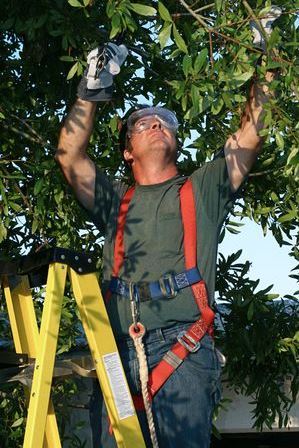 One component of landscaping that sometimes goes left untouched is tree trimming. Trimming trees not only keeps your yard looking great, it also preserves the health and longevity of the tree.
One component of landscaping that sometimes goes left untouched is tree trimming. Trimming trees not only keeps your yard looking great, it also preserves the health and longevity of the tree.
Tree overgrowth and branches that hang loosely around a tree’s trunk pose a safety concern, especially for the little people in your home who often find comfort and shade under a tree.
An overgrown tree is a deterrent to the appeal of your home. Trees that are misshapen detract from the beauty of your house and can completely cover-up architectural components that make your home stand out.
You can trim your trees yourself and knowing what types of trees are in your yard will help you determine how and how often to trim it.
Although each situation is different, here is a general baseline to keep in mind when formulating a schedule for trimming a tree on your property:
Firstly, you need to evaluate the current health of the tree, inspect for any damage from windstorms, and if the overgrowth is blocking a view or an object.
Learning what types of trees you have will give you a general idea of the trimming timeline. For example, the evergreen tree needs little or infrequent trimming as long as it is planted in the right location.
Location does play a key role in tree trimming. When you plant a tree that will get 40 ft. wide near a structure, you can bet it will need to be trimmed often.
Professional arborists will tell you to never trim more than 25% of a tree at a time. You could risk over-pruning, which has a negative impact on a tree’s health and will actually produce even more growth.
It is best to trim trees when they are young. The younger the tree, the better chance you have to keep it healthy through the years and will preserve its form. This prevents a lot of trimming in the future.
If you need assistance with trimming your trees, contact Big Foot Tree Service. We can help you determine the best trimming practices for the types of trees on your property.









Recent Comments